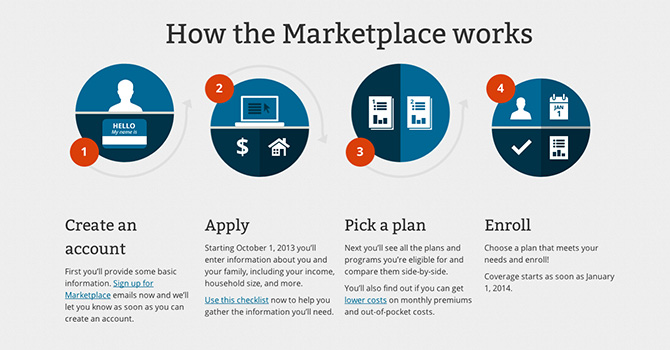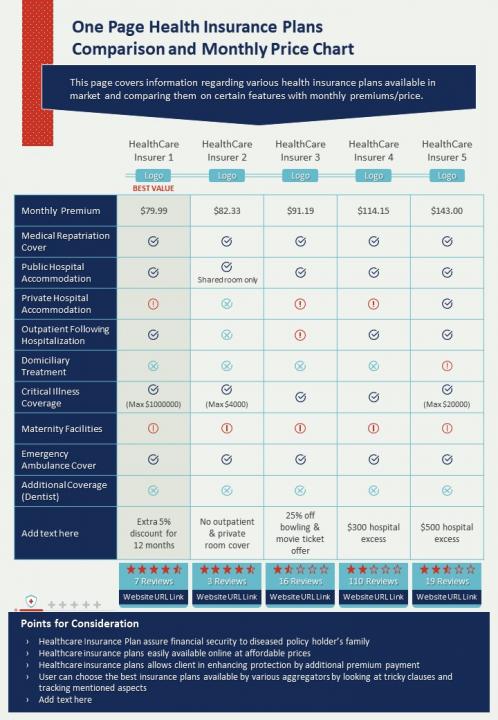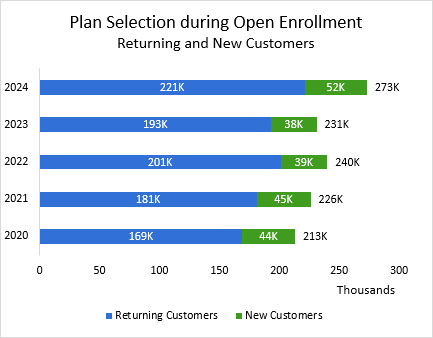Unlocking Access: Your Introduction to the Health Insurance Marketplace
The Health Insurance Marketplace serves as a vital resource for consumers seeking affordable health coverage, particularly amid ongoing economic challenges. It enables individuals and families to compare various insurance plans, ensuring they find options that best suit their needs and budgets. As the landscape of healthcare continues to evolve, the Marketplace plays a critical role in connecting millions of Americans to essential health services.

Image source: Source
Recent legislative developments, notably the Inflation Reduction Act, have significantly impacted the affordability of health insurance through the Marketplace. This act has enhanced subsidies, allowing approximately four in five Marketplace customers to secure coverage for as little as $10 per month, according to HealthCare.gov. Such affordability measures are crucial in a time when healthcare costs are a primary concern for many. Furthermore, these enhancements have contributed to a marked increase in enrollment numbers, demonstrating the Marketplace’s effectiveness in providing accessible healthcare solutions.
As individuals prepare for the upcoming 2024 enrollment period, understanding the features and benefits of the Marketplace is more important than ever. With streamlined processes and improved user experience on platforms like HealthCare.gov, consumers can navigate their options with greater ease. This year, the Open Enrollment Period runs from November 1, 2024, to January 15, 2025, offering ample time for consumers to evaluate their choices and secure necessary coverage, as noted by CMS.
The Health Insurance Marketplace is not just a shopping platform; it is a pivotal component of the healthcare system that empowers consumers to make informed decisions about their health coverage. As the enrollment period approaches, individuals should familiarize themselves with the options available, understand financial assistance opportunities, and take proactive steps to enroll in plans that meet their healthcare needs.
Key Enrollment Dates for 2024
As the new year approaches, it is essential for individuals and families to mark their calendars for key enrollment dates in the Health Insurance Marketplace. The Open Enrollment Period for 2024 will run from November 1, 2024, to January 15, 2025. This window provides a critical opportunity for consumers to enroll in a health insurance plan or make changes to their existing coverage.
One of the most significant deadlines within this period is December 15, 2024. Enrolling by this date ensures that coverage begins on January 1, 2025. Missing this deadline could result in a gap in coverage, leaving individuals vulnerable to high medical costs if they require care early in the year.
Additionally, it’s important to be aware of Special Enrollment Periods (SEPs), which allow individuals to enroll or change their health plans outside the standard Open Enrollment window, provided they experience qualifying life events. Examples of these events include marriage, the birth of a child, or a significant change in income. Understanding these provisions can enhance access to health coverage and provide the flexibility to adjust plans as circumstances change.
Important Dates to Remember:
- November 1, 2024: Open Enrollment begins.
- December 15, 2024: Last day to enroll for coverage starting on January 1, 2025.
- January 15, 2025: Final day of Open Enrollment.
For further details on these important dates, refer to resources such as the HealthCare.gov blog on Open Enrollment dates and the CMS fact sheet for the 2025 Open Enrollment Period, which provide comprehensive information to help you navigate this crucial time effectively.
Discovering Your Health Coverage Options: A Guide to HealthCare.gov
Navigating the Health Insurance Marketplace can initially seem overwhelming, but understanding the various coverage options available can significantly simplify the process. Consumers can explore four primary types of health plans: Bronze, Silver, Gold, and Platinum. Each plan offers different levels of coverage and cost-sharing, allowing individuals to choose a plan that aligns with their healthcare needs and financial situation.
The Bronze plan typically has the lowest monthly premium, making it an attractive option for those who expect to have minimal healthcare needs. However, it also comes with higher out-of-pocket costs when care is needed. In contrast, the Platinum plan features the highest premiums but offers the most comprehensive coverage, including lower deductibles and copayments, which may be ideal for individuals requiring frequent medical care.
According to HealthCare.gov, consumers can compare these plans directly on the website, allowing them to assess which option best meets their budget and healthcare requirements. Understanding these differences is crucial; selecting the right plan can significantly impact both health outcomes and financial stability.

Image source: Source
Moreover, recent enhancements in the Marketplace, driven by the Inflation Reduction Act, have made health insurance more accessible. Remarkably, four in five customers can secure coverage for as low as $10 per month due to increased subsidies and financial assistance options. This substantial reduction in costs underscores the importance of exploring all available options, as it can lead to significant savings for many families.
It is essential for consumers to take the time to compare these plans effectively. What works for one individual may not be the best fit for another. Factors to consider include not just the premium and deductible costs but also specific services covered, provider networks, and potential out-of-pocket expenses. For example, the Silver plan typically covers around 70% of healthcare costs, making it a balanced choice for those who need moderate care without breaking the bank. By doing so, individuals can make informed decisions that best fit their healthcare needs and financial circumstances. Visit HealthCare.gov today to explore your options further.
Navigating Financial Assistance Options in the Health Insurance Marketplace
For many individuals and families, navigating the Health Insurance Marketplace can feel daunting, particularly when it comes to understanding financial assistance options. Fortunately, there are several tools and resources available that simplify this process and unlock significant savings. The Premium Tax Credit is a vital form of assistance that reduces the cost of premiums across all coverage levels: Bronze, Silver, Gold, and Platinum. Thanks to recent legislative changes, particularly the Inflation Reduction Act, approximately four in five customers can secure coverage for as little as $10 per month, making health insurance more accessible than ever.
To help estimate potential premiums and identify available financial assistance, consumers can utilize the KFF Health Insurance Marketplace Calculator. This user-friendly tool allows individuals to input their income, household size, and other relevant factors to determine their eligibility for subsidies and the likely cost of insurance plans. By taking advantage of this resource, consumers can make informed decisions about their health coverage options.

Image source: Source
Understanding the eligibility criteria for financial assistance is crucial. To qualify for the Premium Tax Credit, individuals generally must have an annual income between 100% and 400% of the federal poverty level and cannot be eligible for other qualifying coverage options, such as Medicaid or Medicare. Additionally, assistance is available only for plans purchased through the Marketplace, emphasizing the need for consumers to explore their options effectively. By staying informed about these criteria and the application process, individuals can maximize their benefits and tailor their health coverage to meet their needs.
Consider the story of the Johnson family, who were struggling to afford their health insurance premiums. After using the KFF calculator, they discovered they were eligible for the Premium Tax Credit. With their new coverage costing just $10 a month, they could finally access necessary healthcare without financial strain. This illustrates the profound impact that understanding and utilizing financial assistance can have on families in similar situations.
What steps will you take to uncover your potential savings in the upcoming enrollment period?
Navigating HealthCare.gov with Confidence
Navigating the Health Insurance Marketplace on HealthCare.gov can feel overwhelming due to the numerous options available and the importance of making informed decisions about health coverage. Recent enhancements to the user interface aim to streamline this experience, making it easier for users to find the information they need. These improvements focus on creating a more intuitive layout, ensuring that key features are easily accessible and user-friendly. Whether you are a first-time visitor or a returning user, these updates enhance your ability to navigate the site confidently.
Before diving into plan comparisons, creating an account on HealthCare.gov is essential. This straightforward process personalizes your shopping experience. By providing basic information about your household and income, you can receive tailored recommendations that suit your specific needs. This personalized approach saves time and ensures you explore all available options that fit your eligibility for financial assistance.
Staying informed is crucial during the Open Enrollment Period, which runs from November 1, 2024, to January 15, 2025. To keep track of important deadlines and updates, consider signing up for email and text reminders. These notifications alert you to critical dates and changes, ensuring you never miss an opportunity to enroll or adjust your coverage. By taking advantage of these tools, you empower yourself to make proactive decisions regarding your health insurance.
Ultimately, navigating HealthCare.gov with confidence involves understanding the tools and resources available to you. By preparing adequately and staying aware of key features, consumers can effectively explore their options and secure the coverage that best meets their healthcare needs.
Understanding Your Rights in the Appeals Process
In the intricate landscape of the Health Insurance Marketplace, understanding your rights is paramount, particularly when it comes to the appeals process. If you disagree with a decision made by the Marketplace—whether regarding your eligibility for coverage, the amount of financial assistance, or the type of plan you have chosen—you have the right to appeal.
To initiate an appeal, you must act within 90 days of receiving your Eligibility Notice. This timeline is crucial; if you miss it, you may forfeit your opportunity to contest the decision. Filing an appeal is straightforward and involves several simple steps. You can submit your appeal online through HealthCare.gov, where necessary forms and instructions tailored to your specific case are available. Alternatively, you may submit your appeal by mail or contact the Marketplace Call Center for assistance. This process ensures you have a clear pathway to challenge decisions that may unfairly impact your healthcare access.
The appeals process serves as a vital consumer protection mechanism within the Marketplace framework, empowering you to seek redress and ensuring that your voice is heard. For example, if you believe your eligibility for premium tax credits has been wrongly calculated, an appeal allows you to present your case and potentially rectify the situation.
Additionally, the Marketplace is designed with consumer protections in mind, which are essential during the appeals process. These protections not only inform you of your rights but also support your efforts to navigate any disputes. Understanding these protections will help you feel more confident as you engage with the system.
Knowing your rights and the steps involved in the appeals process can significantly impact your experience with the Health Insurance Marketplace. It’s about ensuring that you receive the coverage and support to which you are entitled and reinforcing your ability to make informed decisions regarding your healthcare. Have you prepared to assert your rights if needed?
For more detailed information on what you can appeal and how to file an appeal, visit the official resources on HealthCare.gov: What can I appeal? and How do I file an appeal?.
2024 Enrollment Trends: A Surge in Participation and Access
The 2024 enrollment period for the Health Insurance Marketplace has witnessed a remarkable surge, with enrollment rising by 41%. This significant increase reflects not only a growing awareness of health insurance options but also enhanced outreach efforts aimed at connecting individuals with the coverage they need. The total number of individuals enrolled in the Marketplace and Medicaid expansion now exceeds 45 million, illustrating the expanding safety net for those seeking affordable healthcare.

Image source: Source
Several factors have contributed to this increased enrollment. The implementation of the Inflation Reduction Act has made health insurance considerably more affordable, allowing four in five customers to find coverage for as low as $10 per month. This financial relief plays a crucial role in motivating consumers to explore their options and enroll in plans that best fit their needs. Targeted outreach campaigns, particularly those focusing on underserved communities, have proven effective in raising awareness about available benefits and enrollment processes.
Education is vital in guiding potential enrollees through the complexities of the Marketplace. As individuals navigate their health insurance options, clear and accessible information can demystify the enrollment process. Resources such as user-friendly online tools and community workshops serve as essential support systems for those unfamiliar with health insurance terminology and processes. By empowering consumers with knowledge, the Marketplace enhances their capacity to make informed decisions about their health coverage.
In addition to affordability, education plays a vital role in driving enrollment. The combination of affordability initiatives, effective outreach, and educational support has transformed the landscape of health insurance enrollment in 2024, paving the way for even greater engagement in the future. How will you take advantage of these trends to secure the coverage you need in 2024? For more detailed statistics and insights into current enrollment trends, refer to the Health Coverage Under the Affordable Care Act: Current Enrollment Trends and State Estimates.
Transformative Legislative Changes Shaping Your Health Coverage Options
In the evolving landscape of health insurance, recent legislative changes have significantly influenced the Health Insurance Marketplace, expanding access and coverage options for millions of Americans. One of the most notable developments is the expansion of eligibility under the Affordable Care Act (ACA), particularly for populations such as Deferred Action for Childhood Arrivals (DACA) recipients. This change allows a broader demographic to access essential health services, reflecting a growing recognition of the need for inclusive healthcare policies. According to the Kaiser Family Foundation, the implications for these individuals are profound, offering them the opportunity to participate in the Marketplace and secure coverage that was previously out of reach.

Image source: Source
Moreover, the Mental Health Parity and Addiction Equity Act (MHPAEA) continues to play a crucial role in shaping coverage options within the Marketplace. This legislation mandates that health plans provide equal coverage for mental health and substance use disorder services, ensuring that these critical areas are not sidelined in health insurance offerings. The Centers for Medicare & Medicaid Services (CMS) emphasizes that this parity requirement enhances consumer protections, enabling individuals to access comprehensive care without facing excessive barriers or costs. This is vital for families seeking holistic health solutions in today’s complex healthcare environment, where mental health is increasingly recognized as an essential component of overall health.
Additionally, the American Rescue Plan has brought substantial changes that directly impact Marketplace consumers. By increasing the Premium Tax Credit and extending subsidies, this legislation has made health insurance more affordable for many families. Estimates indicate that approximately four in five Marketplace enrollees can now find coverage for as low as $10 per month, a significant reduction that underscores the importance of legislative action in enhancing healthcare accessibility. As families navigate these changes, understanding their implications becomes vital for making informed decisions during the enrollment period. How might these changes impact your family’s healthcare options?
These legislative impacts on the Marketplace are profound and multifaceted, affecting eligibility, coverage options, and affordability. They highlight ongoing efforts to create a more equitable healthcare system, allowing more individuals to access the services they need. As you consider your health coverage decisions, reflect on how these transformative changes may benefit you and your loved ones.
Empower Yourself: Take Charge of Your Health Coverage
As the Open Enrollment Period unfolds, it is imperative for consumers to take an active role in their health coverage decisions. Staying informed is essential for securing the best plan for your needs. The Health Insurance Marketplace on HealthCare.gov offers an array of resources designed to empower individuals and families to make educated choices. Recent enhancements in affordability, including provisions from the Inflation Reduction Act, have allowed four in five individuals to find coverage for as low as $10 per month, making it an optimal time to explore your health insurance options.
Utilizing tools such as the KFF Health Insurance Marketplace Calculator can significantly ease the decision-making process, helping you estimate premiums and identify available financial assistance. Acting promptly during the enrollment window—from November 1, 2024, to January 15, 2025—ensures that you secure the coverage you need without the stress of missing critical deadlines. Remember, your health is your most valuable asset, and taking charge of your health coverage is a vital step toward maintaining it.
Image source: Source
To make the most of the enrollment period, consider these key actions:
- Research your options thoroughly.
- Use the KFF calculator to understand your financial assistance eligibility.
- Set reminders for important deadlines to ensure timely enrollment.
Are you ready to secure the health coverage you deserve?

